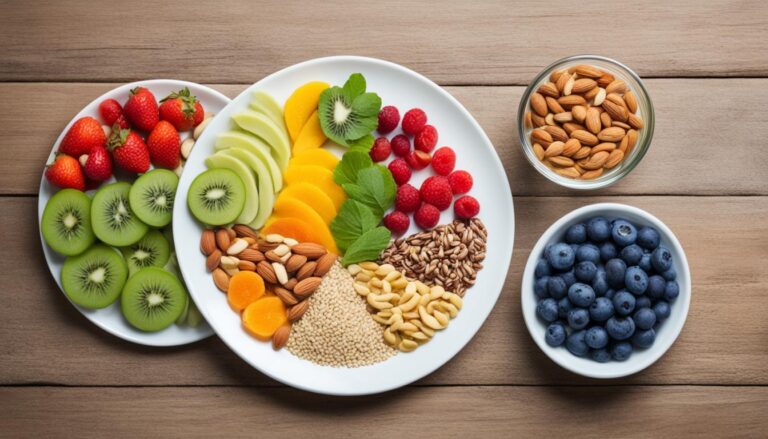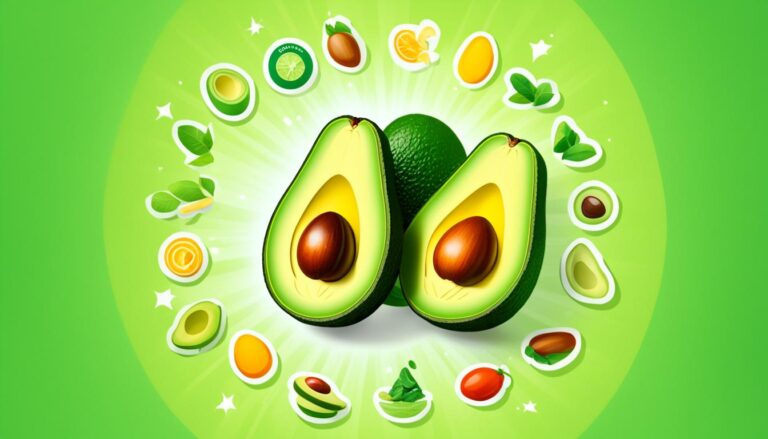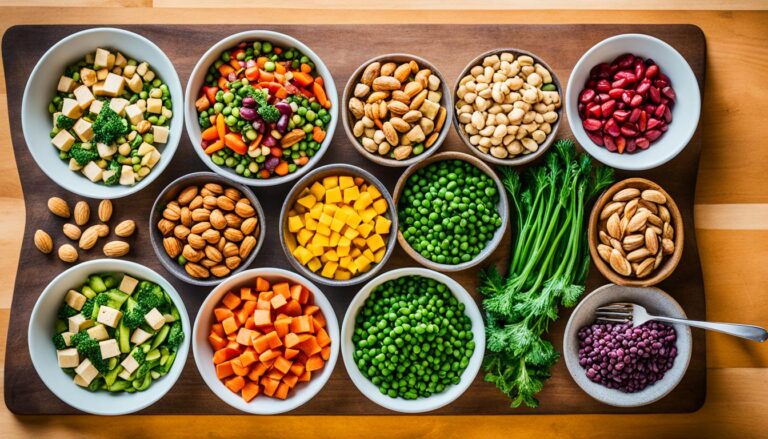Are you tired of carrying around excess belly fat? Do you dream of a flatter stomach and improved health? Well, you’re not alone! Belly fat is a common concern for many individuals, and it’s not just about aesthetics. Excess belly fat can increase the risk of chronic conditions, such as type 2 diabetes and heart disease. But fear not! We’re here to help you shed that stubborn belly fat once and for all.
Now, let me ask you a question: Is it really possible to reduce belly fat quickly with proven tips and tricks? Can you finally say goodbye to those extra inches around your waist? Don’t worry; we have the answers! In this article, we will unveil the most effective strategies to help you achieve your goal of a smaller waistline and better overall health. Get ready to embark on a journey to shed belly fat fast!
Key Takeaways:
- Excess belly fat can increase the risk of chronic conditions like type 2 diabetes and heart disease.
- With proven tips and tricks, you can successfully reduce belly fat and improve your overall health.
- In this article, we will explore strategies and lifestyle changes to help you shed belly fat fast.
- Are you ready to say goodbye to stubborn belly fat? Let’s dive in!
Redefine Your Eating Habits for Belly Fat Reduction
When it comes to losing belly fat, one of the most important factors is redefining your eating habits. The foods we consume have a direct impact on our waistline, and by making healthier choices, we can actively work towards reducing belly fat.
So how exactly can you redefine your eating habits for belly fat reduction? Here are some tips:
- Eat a balanced diet: Ensure that your meals are well-balanced, consisting of lean proteins, fruits, vegetables, whole grains, and healthy fats. A balanced diet will provide your body with the necessary nutrients while keeping calorie intake in check.
- Avoid processed foods: Processed foods are often high in unhealthy fats, sodium, and added sugars. These can contribute to weight gain and increase belly fat. Opt for whole, unprocessed foods whenever possible.
- Practice portion control: Pay attention to your portion sizes and avoid overeating. Use smaller plates and bowls to help control your portions visually, and listen to your body’s hunger and fullness cues.
- Mindful eating: Slow down and savor each bite. Engage your senses and fully experience the flavors and textures of the food you consume. This allows you to enjoy your meals more and prevents mindless overeating.
- Stay hydrated: Drinking an adequate amount of water throughout the day can help control appetite and prevent overeating. Aim for at least 8 cups of water per day.
- Limit sugary drinks: Sugary beverages like soda, juice, and sweetened coffee drinks can contribute to belly fat accumulation. Choose water, unsweetened tea, or infused water as healthier alternatives.
- Include fiber-rich foods: A diet high in fiber can aid in digestion, promote satiety, and help reduce belly fat. Incorporate foods like fruits, vegetables, whole grains, and legumes into your meals.
By implementing these strategies and redefining your eating habits, you can make significant progress in reducing belly fat and achieving a healthier body.

Integrate Protein into Your Diet to Combat Belly Fat
Protein plays a vital role in combating belly fat and promoting overall weight loss. By integrating protein-rich foods into your diet, you can effectively reduce belly fat and improve your metabolic health. There are two key sources of protein that you should emphasize in your eating plan: lean meats and plant-based proteins.
Emphasize Lean Meats and Plant-Based Proteins
Lean meats are an excellent source of protein for individuals seeking to reduce belly fat. Options such as chicken breast, turkey, and fish provide high-quality protein while being low in unhealthy fats. Including these lean meats in your diet can help you meet your protein requirements without adding excessive calories or saturated fats.

In addition to lean meats, plant-based proteins offer a nutritious and sustainable alternative for belly fat reduction. Foods like tofu, tempeh, legumes, and quinoa are excellent choices for incorporating plant-based protein into your meals. These options are not only rich in protein but also provide essential nutrients, fiber, and antioxidants that are beneficial for overall health.
By diversifying your protein sources to include both lean meats and plant-based options, you can enjoy a variety of flavors and textures while supporting your belly fat reduction goals.
How Protein Helps in Satiety and Metabolism
Protein plays a crucial role in promoting satiety, making you feel full and satisfied after a meal. Unlike carbohydrates and fats, protein takes longer to digest, keeping you satisfied for longer periods and reducing the likelihood of overeating. By incorporating protein into your meals and snacks, you can effectively control your appetite and prevent excessive calorie consumption.
Furthermore, protein has a thermogenic effect on the body, which means it requires more energy for digestion and absorption. This increased metabolic activity can boost your overall calorie expenditure, contributing to belly fat reduction over time. By including protein-rich foods in your diet, you can enhance your metabolism and promote greater fat burning.
In summary, protein is a powerful ally in the fight against belly fat. Emphasizing lean meats and plant-based proteins in your diet can provide numerous benefits, including increased satiety, improved metabolism, and enhanced weight loss. Remember to consult with a healthcare professional or a registered dietitian to determine the appropriate protein intake for your specific needs and goals.
Navigate the Fat Landscape: Healthy Fats vs. Trans Fats
When it comes to belly fat reduction, understanding the differences between healthy fats and trans fats is crucial. While fats have long been associated with weight gain, not all fats are created equal. In fact, incorporating healthy fats into your diet can actually be beneficial for reducing belly fat and improving overall health.
So, what exactly are healthy fats? These are fats that provide essential nutrients and promote good health. They can be found in foods such as avocados, nuts, seeds, and fatty fish like salmon. These fats are known for their positive impact on cholesterol levels and heart health.
On the other hand, trans fats are the unhealthy ones that you should try to avoid. Trans fats are formed when liquid oils are processed into solid fats through a process called hydrogenation. These fats are commonly found in processed foods, fried foods, and baked goods. Consuming trans fats can increase the risk of heart disease, inflammation, and even contribute to belly fat accumulation.
Reducing your intake of trans fats is an essential step in any belly fat diet. These unhealthy fats not only hinder weight loss efforts but also have a detrimental effect on overall health. By navigating the fat landscape and making healthier choices, you can effectively reduce belly fat and support your weight loss journey.
To help you make informed choices, here’s a handy table that highlights the differences between healthy fats and trans fats:
| Healthy Fats | Trans Fats |
|---|---|
| Found in foods like avocados, nuts, seeds, and fatty fish | Found in processed foods, fried foods, and baked goods |
| Promote heart health and lower bad cholesterol levels | Increase the risk of heart disease and inflammation |
| Aid in weight loss and reduce belly fat | Contribute to belly fat accumulation |
By choosing foods rich in healthy fats and avoiding those high in trans fats, you’re taking a significant step towards your belly fat reduction goals. Remember, it’s not about eliminating fats entirely, but rather making smart choices to support your overall health and well-being.
Belly Fat Burning Activities: Your Roadmap to Success
Physical activity plays a crucial role in burning belly fat and achieving your weight loss goals. Incorporating belly fat burning activities into your routine can significantly impact your overall health and help you shed those extra pounds. In this section, we will explore two key types of exercises that are instrumental in reducing belly fat: aerobic exercises and strength training.
Aerobic Exercises: Key to Losing Visceral Fat
Aerobic exercises, also known as cardio exercises, are highly effective in targeting visceral fat, which is the fat stored deep within the abdomen surrounding the vital organs. Engaging in regular aerobic exercises not only helps burn calories but also improves cardiovascular health and increases metabolism.
“Aerobic exercises are like a fat-burning furnace for your body. They raise your heart rate and make you sweat, signaling that you’re burning calories and fat.”
There are numerous aerobic exercise options to choose from, such as running, cycling, swimming, dancing, and HIIT (High-Intensity Interval Training) workouts. These activities elevate your heart rate and keep it elevated for an extended period, allowing your body to utilize stored fat as fuel. Aim for at least 150 minutes of moderate-intensity aerobic exercise or 75 minutes of vigorous-intensity aerobic exercise per week to optimize belly fat burning.
Remember, finding exercises that you enjoy and can sustain long-term is key to staying motivated and sticking to your fitness routine.
Strength Training: Building Muscle to Burn Fat
Strength training, also known as resistance training or weightlifting, is essential for building lean muscle mass. While aerobic exercises primarily focus on burning calories during the workout, strength training helps build muscle, which aids in burning fat not only during exercise but also at rest.
“Strength training helps increase your basal metabolic rate, allowing your body to burn more calories throughout the day, even when you’re not working out.”
Incorporate strength training exercises into your routine, targeting all major muscle groups, at least two to three times a week. You can use free weights, weight machines, resistance bands, or even your own body weight for resistance. Examples of strength training exercises include squats, deadlifts, lunges, push-ups, and bicep curls.
Not only does strength training help you build muscle and burn fat, but it also improves overall strength and enhances bone density. Incorporating both aerobic exercises and strength training into your fitness regimen will provide a comprehensive approach to burning belly fat and achieving long-term weight loss success.

| Aerobic Exercises | Strength Training |
|---|---|
| Running | Squats |
| Cycling | Deadlifts |
| Swimming | Lunges |
| Dancing | Push-ups |
| HIIT Workouts | Bicep Curls |
Understanding How Stress Impacts Belly Fat
Stress is not just a mental and emotional burden, it can also have a significant impact on our physical health, particularly when it comes to belly fat. Research has shown that chronic stress can contribute to the accumulation of belly fat due to the hormonal changes it triggers in the body.
When we experience stress, the body releases cortisol, a hormone that plays a role in regulating metabolism, blood sugar levels, and inflammation. In high-stress situations, cortisol levels can remain elevated for extended periods, which can lead to increased appetite and cravings for unhealthy, high-calorie foods.
This hormonal response to stress can result in weight gain, especially in the abdominal area. Excess belly fat, also known as visceral fat, is particularly dangerous as it surrounds vital organs and has been linked to an increased risk of heart disease, diabetes, and other chronic conditions.
“Stress can wreak havoc on our waistline, leading to the accumulation of unhealthy belly fat.”
However, reducing stress levels can help mitigate the impact it has on belly fat. Incorporating stress reduction techniques into our daily routine can not only improve our overall well-being but also aid in belly fat reduction.
Here are some strategies to manage stress and reduce belly fat:
- Engage in regular physical activity: Exercise is a powerful stress reliever that can help reduce cortisol levels and promote overall relaxation.
- Practice mindfulness and meditation: Techniques like deep breathing, meditation, and yoga can calm the mind and reduce stress levels.
- Get enough sleep: Adequate rest is crucial in managing stress. Aim for 7-9 hours of quality sleep each night.
- Seek social support: Connecting with loved ones and participating in activities we enjoy can offer a sense of belonging and reduce stress.
- Take time for self-care: Engage in activities that bring joy and relaxation, such as reading, listening to music, or taking a soothing bath.

Managing stress is key to maintaining a healthy lifestyle and reducing belly fat. By prioritizing stress reduction techniques, we can not only improve our physical health but also enhance our overall well-being.
The Role of Sleep in Achieving Belly Fat Loss
Sleep plays a crucial role in achieving belly fat loss and overall weight management. Quality sleep is often overlooked as a cornerstone of a healthy lifestyle, but it is essential for maintaining a healthy weight and reducing belly fat.

Conclusion
After diving into the world of belly fat reduction, it is clear that shedding those extra pounds around the midsection is not an insurmountable task. By following the proven tips and tricks shared in this article, you can take significant steps towards achieving your goal of losing belly fat fast.
Throughout this journey, we have emphasized the importance of redefining your eating habits, incorporating protein into your diet, understanding the differences between healthy fats and trans fats, engaging in belly fat burning activities, and managing stress while prioritizing quality sleep. These strategies, when implemented together, can yield remarkable results.
Remember, achieving belly fat reduction requires consistency and determination. Stay committed to adopting healthier eating habits, making smarter food choices, and integrating physical activity into your routine. Don’t let stress derail your efforts and prioritize getting enough quality sleep each night.
So, whether you’re trying to fit into your favorite jeans or aiming to improve your overall health, take action now to lose belly fat and enjoy a happier, healthier life. Keep in mind that significant changes take time, but with the right mindset and the right approach, you can achieve your goals. The journey may not always be easy, but it will be worth it in the end. Here’s to a slimmer, stronger, and more confident you!





